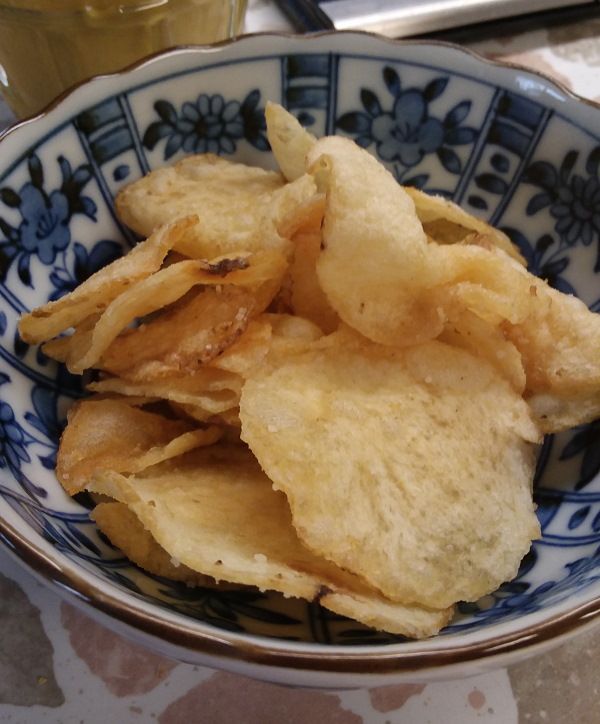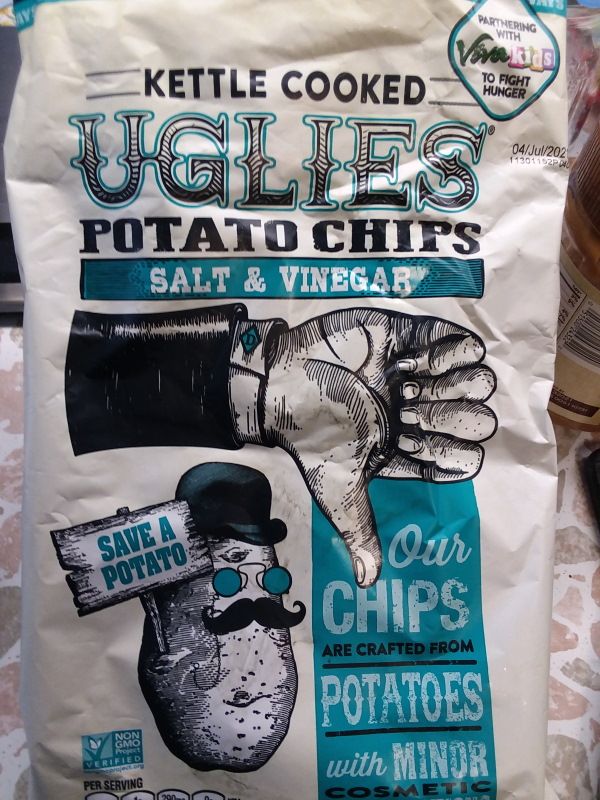Uglies Snacks is a brand belonging to Dieffenbach's, a maker
of potato chips since 1964. Uglies' chips are made from potatoes "with
minor cosmetic imperfections" such as these:
The Uglies website positions itself as being on the frontlines against food waste which, they claim, is also a waste of money and an impediment to "creating a sustainable food system". They rescue spuds that are "too large or too small; those with the wrong color or have the wrong sugar content. Some of the potatoes are slightly blemished and, of course, some are just farmer surplus." It proceeds to describe how we Americans throw out lots of uneaten food that ends up in landfills in alarming quantities. I think consumers are supposed to infer from this that Uglies is rescuing potatoes that farmers would otherwise throw into the garbage. Or something like that.
I have no doubt that Americans waste a lot of food by throwing it away. But
were the potatoes that the folks at Uglies use for their chips in danger of
being interred at a landfill as their website implied? Or would they have met a
different fate? Reading about the ugly produce movement, I find myself growing
ever more confused. Some scientists argue that companies like Uglies are a hoax
of sorts saying that those ugly spuds would been eaten by farm animals or simply
plowed under to become fertilizer. Others in the debate say, sure, they don't
end up in a landfill but becoming animal feed is still "food waste".
At this point in my understanding of the ugly produce
debate, it's still something of a he said, she said kind of thing. And it
brings up the question of whether your average consumer of potato chips can
tell if their snack was made from cosmetically imperfect spuds or not. I highly
suspect not so why doesn't everyone use ugly spuds? Or do they to one degree or
another but just not advertise the fact like Uglies?

If you look at these chips, they are really not all that
different from other brands. They are perhaps not as uniformly colored as other
chips but they certainly don't stick out like a sore thumb. There is, however,
one way, that Uglies are different from most of the other brands of salt &
vinegar chips that I've tasted and that is their smell. When I took a whiff, my
nose was greeted by a pungent cloud of vinegar fumes and not the usual smell of
potatoes and oil. From what I've read, acetic acid (the main component in vinegar)
is aromatic when it exists in its whole form. When you apply it to a base food,
it loses a hydrogen ion and loses its aroma. But when applied to an acidic
food, that hydrogen ion stays put and you smell that distinctive vinegar smell.
To be found amongst the ingredients are citric and lactic
acids so my guess is that the potatoes are already slightly acidic by the time
the vinegar powder is applied thusly the hydrogen ions have nowhere to go, much
like people during a Covid pandemic, and hence the chips' aroma.
These chips seemed to be a bit thicker than average. As
kettle chips go, they had a solid crunch to them that was pleasing to the ear as
well as the tongue. I tasted just a hint more salt than average here which I
rather liked. Plus, there was "way more vinegar" as my notes say. A
really nice tang. I suppose this isn't surprising considering the recipe uses vinegar
powder, sodium diacetate, citric acid, and lactic acid. In fact, you'd have
thought that, with all those acids, they'd have been even tangier. The spuds
themselves had a more earthy flavor mostly lacking that spudly sweetness.
It seems debatable to me that Uglies really do much to lessen
food waste in this country but it is incontrovertibly the case that Uglies makes
a fine salt & vinegar potato chip with its firm tang and solid crunch.



No comments:
Post a Comment